 Glasgow's People's Palace is home to a sprightly and entertaining museum showing the history of the city's working classes, especially in the 19th and 20th centuries—but the history isn't over, and the outcome is uncertain in this city that was once one of the world's most industrialized and most densely-populated.
Glasgow's People's Palace is home to a sprightly and entertaining museum showing the history of the city's working classes, especially in the 19th and 20th centuries—but the history isn't over, and the outcome is uncertain in this city that was once one of the world's most industrialized and most densely-populated.
The People's Palace that was intended to bring a breath of fresh air, culture and rest to Glasgow's polluted, overcrowded and unhealthy East End in 1898 is, ironically, fighting for its life 120 years later, when the neighborhood has lost nearly all trace of its former flavor.
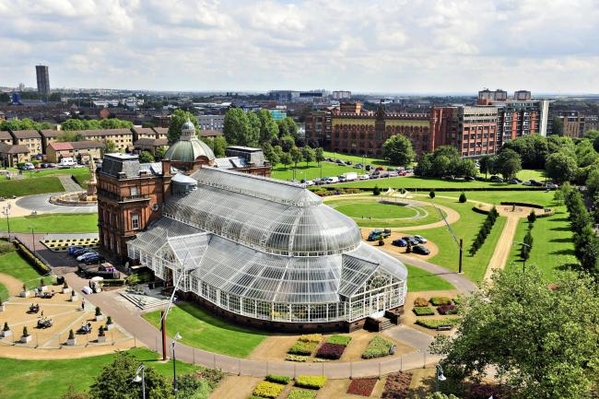
The grand building, and the impressive greenhouses of the Winter Garden attached to it, have gone through cycles of decay and renovation and re-decay and re-renovation. Closed for two years in the 1990s, it closed again in 2018 for emergency repairs, and when the cost of permanent repairs was added up, it faced permanent closure. It re-opened last spring, just before our visit, and its long-term fate is still up in the air. The Winter Garden is presently closed.
When the Earl of Rosebery opened the building in 1898, he called it "A palace of pleasure and imagination around which the people may place their affections and which may give them a home on which their memory may rest," and declared it would be "Open to the people for ever and ever." Clearly he didn't understand modern municipal finance.
There's always been a museum in the building; originally it was on the second floor, with an art gallery on the third, and reading and recreation rooms on the ground floor, as well as access to the greenhouses of the Winter Palace behind it. But since the 1940s, the whole building has been home to a museum of social history, the history of the living society and its common people. Exhibits like the one above highlight many of the issues people faced.
Housing has been high on the list of issues for a long time; the picture near the top shows a tenement area in the East End in the 1970s, not the 1870s, and struggles over ending slums and what to build have continued into the present. The photo below opens a discussion over what is needed and for whom, and cites the Depression and war eras as having been lucky for sparing the city from some of the plans that had been drawn up for drastic changes to the city.
World War II changed more in Glasgow than the postponement of urban renewal plans. As a major industrial city, Glasgow not only saw an influx of workers to its industries, including shipbuilding, but also saw the city become a repeated target for German bombers. Some of the exhibits reflect wartime measures including evacuations, bomb shelters and even an in-home shelter for buildings with no place to shelter. It was designed to keep falling walls off residents.
Wartime also brought food rationing and shortages, and campaigns to promote the use of available resources to feed the population. It also brought a need to bring women into new factory roles as men were drafted to fight.
An extended exhibit focuses on one of Glasgow's unique institutions, the 'Steamie,' municipal steam laundries to which families could bring their laundry, wash it, and dry it on huge heated drying racks. They were needed because of how many families lived in single rooms or tiny apartments with no facilities.The last of them closed only a few years ago. Aside from their intended purposed, 'down the Steamie' was where gossip could be exchanged and social ties created.
The museum gives attention to all kinds of social and protest movements and the growth of a socialist party. Some of the propaganda for social improvement is worth a smile; these two images are supposed to represent the result of taking a temperance pledge; miraculously the man gains money, health, furniture and a decent suit!
There are also many exhibits focusing on unions and trades in the city, including this display of ID buttons, usually worn on a worker's cap. Some were private companies, others for public employees such as the streetwashers, who were warned below not to expect the city to pay for clothes missing from the depot.
The People's Palace has a pair of interesting neighbors, the Doulton Fountain and the Templeton Carpet Factory, and both reflect in their own way the social history of the city. The fountain is the largest ceramic fountain ever built anywhere. Its terracotta base and sculptures were built for the 1888 International Exhibition that marked a high point in Glasgow's industrial fame. More on the fountain another time!
Just over the road from the Palace is the ornate building that visitors often guess to be a school or other public fixture. Its grand appearance is no accident: James Templeton got tired of having the city turn down plans for his new building that he hired a leading architect, William Leiper, who based his design on the Doge's Palace in Venice, a design too grand to be turned down.

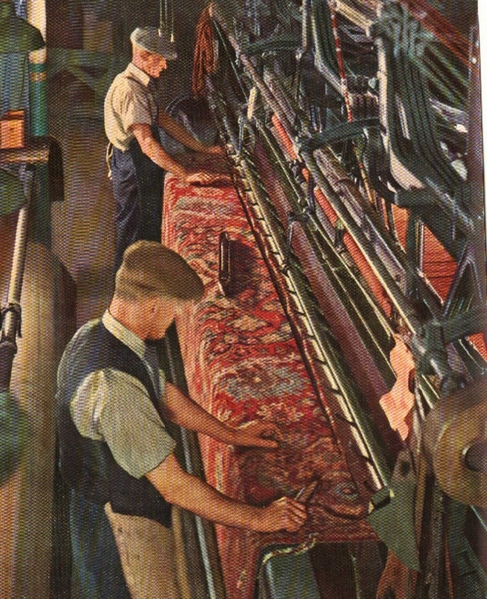 Templeton made his and his company's fortune with a patent for a process that enabled machine processing of chenille into carpets that could follow the intricate patterns of oriental carpets; for many years it was the largest carpet maker in the world.
Templeton made his and his company's fortune with a patent for a process that enabled machine processing of chenille into carpets that could follow the intricate patterns of oriental carpets; for many years it was the largest carpet maker in the world.
Templeton's works also included playing fields and other recreational facilities for employees; the fields survive as fields used by the local high schools.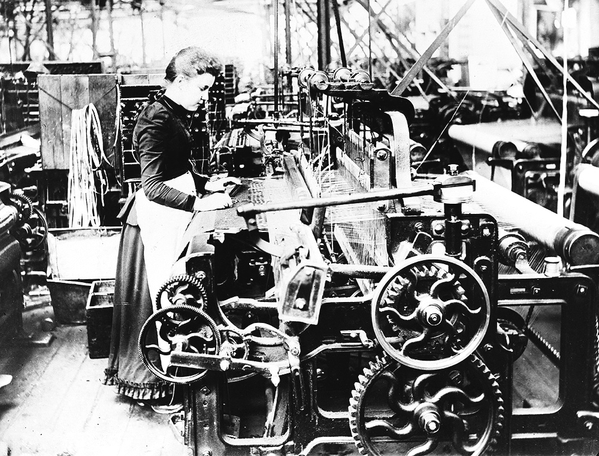
The company, and the factory, closed in the late 1970s and the building became an office center.
In 2005, another renovation made it a 'lifestyle village' with offices, restau-rants, and, inevitably, condos.
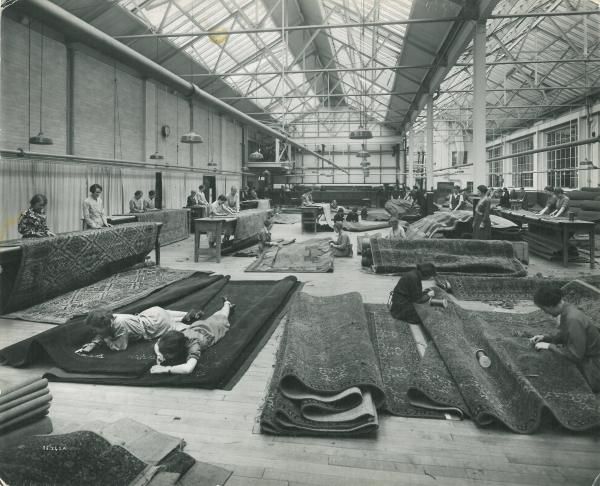
Not resting, tying off ends in the carpets.

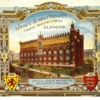




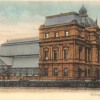

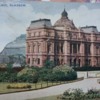
Comments (0)